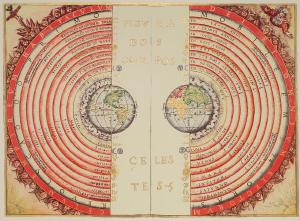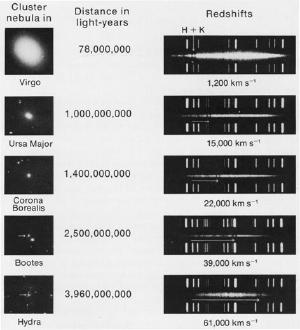Blog
Model Dependents
7 November 2014
 Bartolomeu Velho, 1568
Bartolomeu Velho, 1568One of the interesting aspects of science is the fact that what we observe is often not what we measure. The data gathered from a particular experiment is just one aspect of scientific study. To really make progress you need to put that data within the context of scientific models. As a result, most of what we study in astronomy and other sciences is deeply dependent upon the models we use to understand the universe.

For example, we observe the expansion of the universe by measuring the redshifts of galaxies. Although our techniques have improved since the time of Hubble, the measurement is pretty much the same. We look at the spectra of a galaxy and determine where there are prominent spectral lines. The location of these lines tell us very little on their own. A similar measurement can be done with Cepheid variable stars. This involves observing how their apparent brightness changes over time. Again, by itself the brightness variation of Cepheids tells us very little.
But as Henrietta Leavitt demonstrated, there’s a correlation between the period of a Cepheid variable and its absolute brightness. We know that the apparent brightness of an object decreases with distance, following an inverse-square model. By comparing the period of a Cepheid with its apparent brightness, we can calculate a distance. Then as Hubble showed, there is a correlation between the redshift of a galaxy and its distance. Since the redshift of light is dependent up0n the models of special and general relativity, from the Hubble relation we learn that the universe is expanding.
What we measure is the location of spectral lines and the varying brightness of stars. What we observe is the expansion of the universe.
When you start delving into the science of modern astronomy, what you find is a whole series of models built upon models. The colors or wavelengths of starlight are measured with diffraction gratings. To related the observed position of different colors with their wavelengths, you need to use the wave model of light. To determine how the shifts of those wavelengths depend upon the speed of the source, you need the model of relativity. To compare them with specific elements you need models of atomic physics. And on and on.
Of course this raises an important question. If all these scientific findings are built upon models of models, how do we know that we’re not simply deluding ourselves? After all, it’s often claimed by skeptics that mainstream scientists are too blinded by their models to be open to better alternatives. The answer is actually two-fold. The first is that all of these models are based upon observations that aren’t model dependent. We’ve confirmed that these models work before we ever utilize them in other work. The interweaving of models over time is part of the confluence of evidence that confirms our understanding of the cosmos. The second is that much of modern research separates models from observations. In astronomy, for example, we talk of galaxy redshifts expressed as a quantity known as z. The z value of a galaxy is a direct measurement that depends upon no model. From the standard cosmological model we can relate z to distance, but that isn’t necessary for most research.
So while we often use models to develop a deeper understanding of the universe, we’re careful not to become model dependent. Because even though we have a really good understanding of the cosmos, there’s always a possibility that parts of our models could be wrong.